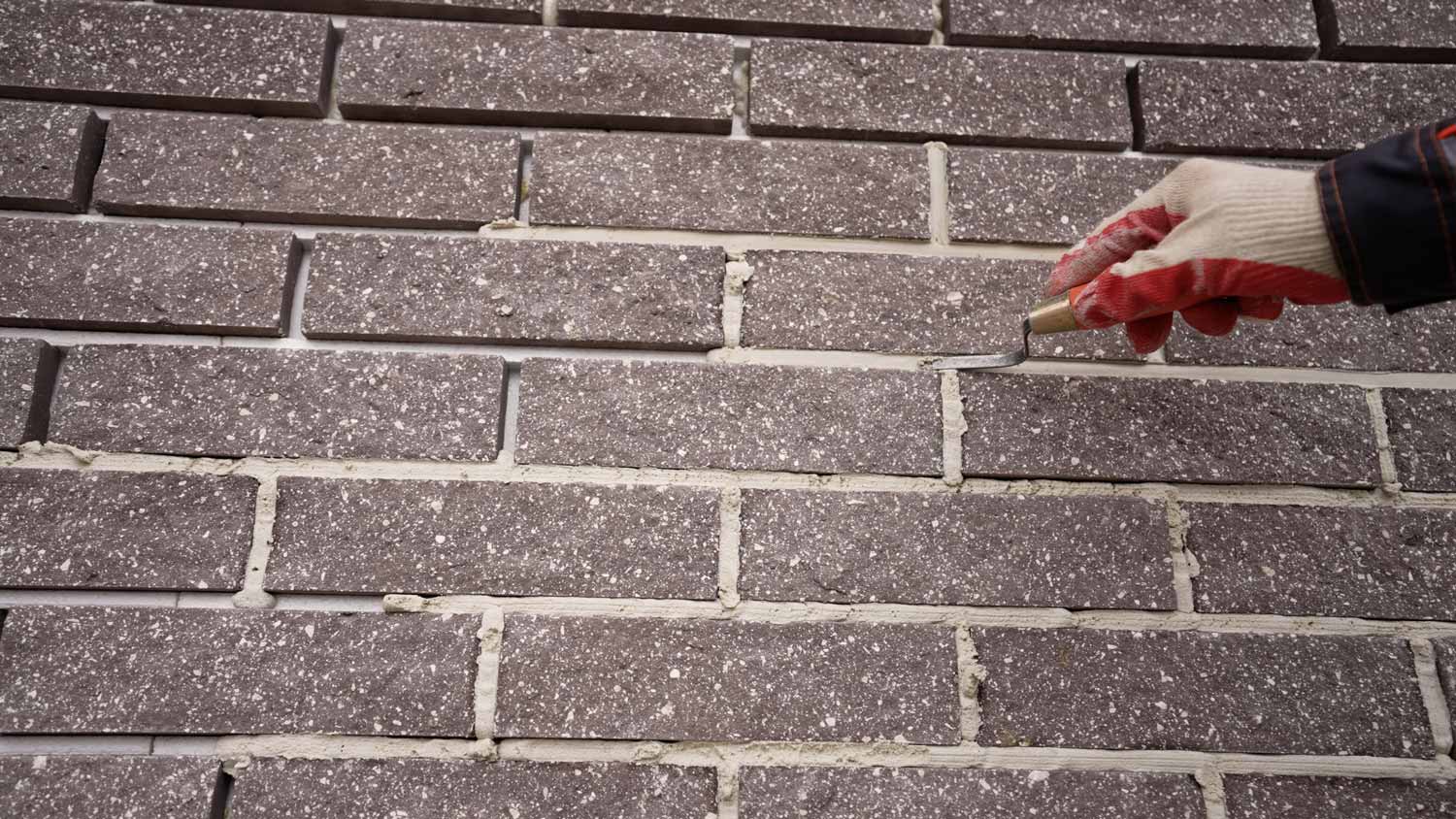What is a Keystone in Masonry?
A keystone blends historical beauty and modern aesthetics


Keystone supports the structural weight of arches or vaults.
Concept dates back thousands of years.
Modern use is more for aesthetics than function.
In masonry, a keystone refers to the central, wedge-shaped stone at the top of an arch or vault. It is a crucial element of the architectural structure as it locks the other stones in place, distributing the weight of the structure downward and outward. Want to learn what is a keystone? Read on for the history of its use in masonry and why it's important to a home's structural integrity.
What is a Keystone in Masonry?
A keystone, sometimes called a capstone, plays a significant role in ensuring the stability and integrity of an arch or vault in a home or other type of structure. The wedge shape of the keystone allows it to fit firmly between adjacent stones, creating a self-supporting structure without the need for additional adhesives or binding materials.
Typically, the keystone is the last stone placed during the construction process. It distributes the structure's weight downward and outward, making arches and vaults stable and capable of withstanding substantial loads over long periods of time.
The History of Keystone

The use of a keystone in architecture dates back thousands of years. It is a fundamental element in arch construction, and its significance can be traced through different civilizations and architectural styles. Some of the beautiful buildings across the world still standing today feature keystones.
Ancient Mesopotamia and Egypt: The concept of the arch and the keystone can be traced back to ancient Mesopotamia and Egypt, where they laid the groundwork for the development of more sophisticated arch systems.
Ancient Greece: As their engineering skills evolved, the Greeks started experimenting with the use of arches. The Mycenaeans are believed to have been the first to incorporate true arches in their structures, and later, the ancient Greeks further developed this architectural technique.
Roman: The Romans greatly advanced the use of the arch and keystone in their architecture by using arches extensively in aqueducts, bridges, amphitheaters, and other monumental structures.
Byzantine and Romanesque: Following the decline of the Western Roman Empire, the knowledge of arch construction was preserved and further developed by the Byzantine Empire.
Gothic: The Gothic Era marked a significant advancement in architectural techniques. Gothic architects pushed the boundaries of structural engineering and incorporated pointed arches, which allowed for taller and more expansive buildings.
Renaissance and Baroque: Keystone architectural works during this time, such as the dome of St. Peter's Basilica in Rome, showcased the mastery of arch and keystone construction.
Modern: While modern architecture often veered away from traditional arches and keystones, elements of the technique can still be found in some contemporary structures. Today, keystone-inspired designs may be used for aesthetic purposes or in symbolic references to historical architectural styles.
How a Keystone is Used in Homes

In home architecture, the keystone is not as commonly used as in monumental and historical structures, but its principles have been adapted and incorporated in various ways to add architectural interest, enhance structural stability, or to create aesthetic appeal.
Homeowners may choose to incorporate decorative arches in their interiors, such as in doorways between rooms or as architectural features in entryways or hallways. These arches may not have keystones but can evoke a similar sense of historical charm. In some modern homes, keystone-like blocks or decorative stones may be used to create the appearance of an arch without serving a structural purpose. These elements are often purely decorative and can be found above doors, windows, or as part of an accent feature on a façade.
In homes with vaulted ceilings, the appearance may resemble an inverted arch. Though not a true arch with a keystone at the top, this architectural feature employs the same principles of load distribution to create an open, spacious feel in the interior.
Homes featuring masonry or stone construction may use the principles of arches and keystones more traditionally. For example, in a stone fireplace, an arch with a keystone might be included for both structural and aesthetic purposes. In some cases, older homes or homes with unique architectural features may use true keystones in load-bearing structures, such as supporting archways between rooms.
It's not uncommon for homeowners to incorporate arches and keystones in outdoor spaces, such as garden entrances or pergolas, to create an inviting and visually appealing atmosphere. In certain architectural styles that draw inspiration from historical periods like Romanesque or Gothic, the use of arches and keystones may be more prevalent in exterior home design.
.png?impolicy=infographic)
Cost of Keystone in Your Home

If you're intrigued by the concept of keystone and arch design, hire a masonry contractor to learn how you can incorporate this style into your home. Whether you're looking to build a home with these elements or breathe new life into an older home with stunning arch designs, a contractor has the knowledge and skills to help you achieve your vision.
The cost of building an arch will vary based on the material you choose, but the two most common materials are stone and brick. Stone wall costs vary between $800 and $15,000, while brick wall costs range between $2,000 and $9,000. If you want to repair a brick home, a brick wall repair ranges from $300 to $5,000.















